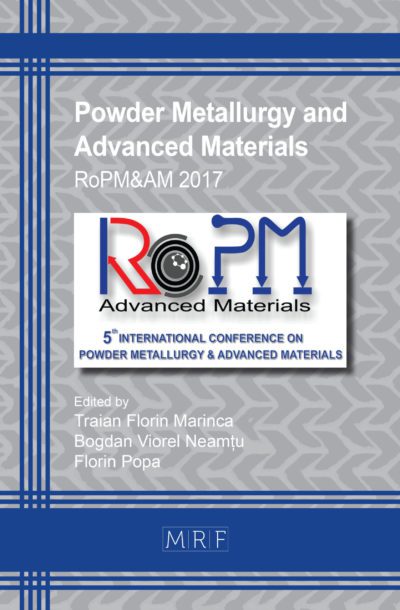–
Numerical simulation of the extrusion process with different FEM code approaches: analysis of thermal field, profile speed, defects evolution, and microstructure of hollow tubes
PELACCIA Riccardo, NEGOZIO Marco, DI DONATO Sara, REGGIANI Barbara, DONATI Lorenzo
download PDFAbstract. Over the years, the utilization of FEM numerical simulation has become a valuable tool for both die makers and extruders. To assess the evolution of FEM codes in terms of problem-solving potentiality, accuracy, as well as reduction of computational time, the ‘ICEB – International Conference on Extrusion and Benchmark’ conference series was established. The participants, who are unaware of the experimental outputs in advance, share with the organizers their numerical results to be compared with the actual experimental data. Analysis and discussion of the results during the conference allows users to check if their simulation settings are adequate to replicate the problems, and software house to verify the sensitivity of their solving methods. For the ICEB 2023, hollow tube-shaped profiles in AA6082 were extruded by varying the nitrogen flow rate and the quenching conditions. The experimental-numerical comparison was assessed in terms of press load, profile speeds, profile and die temperatures, defects evolution, nitrogen cooling efficiency, and the profiles’ microstructure.
Keywords
Extrusion, Process Monitoring, Defect Analysis, Microstructure, FEM Validation
Published online 4/24/2024, 10 pages
Copyright © 2024 by the author(s)
Published under license by Materials Research Forum LLC., Millersville PA, USA
Citation: PELACCIA Riccardo, NEGOZIO Marco, DI DONATO Sara, REGGIANI Barbara, DONATI Lorenzo, Numerical simulation of the extrusion process with different FEM code approaches: analysis of thermal field, profile speed, defects evolution, and microstructure of hollow tubes, Materials Research Proceedings, Vol. 41, pp 771-780, 2024
DOI: https://doi.org/10.21741/9781644903131-85
The article was published as article 85 of the book Material Forming
![]() Content from this work may be used under the terms of the Creative Commons Attribution 3.0 license. Any further distribution of this work must maintain attribution to the author(s) and the title of the work, journal citation and DOI.
Content from this work may be used under the terms of the Creative Commons Attribution 3.0 license. Any further distribution of this work must maintain attribution to the author(s) and the title of the work, journal citation and DOI.
References
[1] B. Reggiani, L. Donati, L. Tomesani, ICEB – International conference on extrusion and benchmark, Light Metal Age 75 (5) (2017) 52 – 60.
[2] L. Donati, B. Reggiani, R. Pelaccia, M. Negozio, S. Di Donato, Advancements in extrusion and drawing: a review of the contributes by the ESAFORM community, Int. J. Mater. Form. 15 (2022) 41. https://doi.org/10.1007/s12289-022-01664-w
[3] M. Schikorra, L. Donati, L. Tomesani, A. E. Tekkaya, Extrusion Benchmark 2007 – Benchmark Experiments: Study on Material Flow Extrusion of a Flat Die, Key Eng. Mater. 367 (2008) 1-8. https://doi.org/10.4028/www.scientific.net/KEM.367.1
[4] D. Pietzka, et al., Extrusion Benchmark 2009 – Experimental analysis of deflection in extrusion dies. Key Eng. Mater. 424 (2010) 19 – 26. https://doi.org/10.4028/www.scientific.net/KEM.424.19
[5] A. Selvaggio, et al., Extrusion Benchmark 2011: Evaluation of different design strategies on process conditions, die deflection and seam weld quality in hollow profiles, Key Eng. Mater. 491 (2012) 1 – 10. https://doi.org/10.4028/www.scientific.net/KEM.491.1
[6] L. Donati, et al., Effect of liquid nitrogen die cooling on extrusion process conditions Key Eng. Mater. 491 (2012) 215 – 222. https://doi.org/10.4028/www.scientific.net/KEM.491.215
[7] A. Selvaggio, T. Kloppenborg, M. Schwane, et al., Extrusion Benchmark 2013 – Experimental Analysis of Mandrel Deflection, Local Temperature and Pressure in Extrusion Dies, Key Eng. Mater. 585 (2013) 13 – 22. https://doi.org/10.4028/www.scientific.net/KEM.585.13
[8] A. Selvaggio, L. Donati, et al., Scientific Benchmark 2015: Effect of choking and bearing length on metal flow balancing in extrusion dies, Mater. Today: Proc 2 (2015) 4704-4713. https://doi.org/10.1016/j.matpr.2015.10.003
[9] A. Gamberoni, L. Donati, et al., Industrial Benchmark 2015: process monitoring and analysis of hollow EN AW-6063 extruded profile, Mater. Today: Proc 2 (2015) 4714-4725. https://doi.org/10.1016/j.matpr.2015.10.004
[10] L. Donati L., A. Segatori et al., Extrusion Benchmark 2017: Effect of Die Design on Profile Quality and Distortions of Thin C-Shaped Hollow Profiles, Mater. Today: Proc 10 (2019) 171–184. https://doi.org/10.1016/j.matpr.2018.10.394
[11] R. Pelaccia, M. Negozio, et al. Extrusion Benchmark 2023: Effect of die design on profile speed, seam weld quality and microstructure of hollow tubes, Key Eng. Mater, under press.
[12] M. Negozio, et al., Numerical investigation of the surface recrystallization during the extrusion of a AA6082 aluminum alloy under different process conditions Int. J. Adv. Manuf. Technol. 129 (3-4) (2023) 1585-1599. https://doi.org/10.1007/s00170-023-12397-8
[13] T. Sheppard, Prediction of structure during shaped extrusion and subsequent static recrystallisation during the solution soaking operation, J. Mater. Process. Technol. 177 (1-3) (2006) 26-35. https://doi.org/10.1016/j.jmatprotec.2006.04.099
[14] M. Negozio, R. Pelaccia, L. Donati, et al., Simulation of the microstructure evolution during the extrusion of two industrial-scale AA6063 profiles, J. Manuf. Process. 99 (2023) 501-512. https://doi.org/10.1016/j.jmapro.2023.05.075
[15] B. Reggiani, L. Donati, Comparison of experimental methods to evaluate the seam welds quality in extruded profiles, Trans. Nonferrous Met. Soc China, 30 (3) (2020) 619-634. https://doi.org/10.1016/S1003-6326(20)65241-4
[16] R. Pelaccia, B. Reggiani, et al., Liquid nitrogen in the industrial practice of hot aluminium extrusion: experimental and numerical investigation, Int J Adv Manuf Technol. 119 (2022) 3141–3155. https://doi.org/10.1007/s00170-021-08422-3
[17] R. Pelaccia, P. E. Santangelo, A Homogeneous Flow Model for nitrogen cooling in the aluminum-alloy extrusion process, Int. J. Heat Mass Transf. 195 (2022) 123202. https://doi.org/10.1016/j.ijheatmasstransfer.2022.123202
































